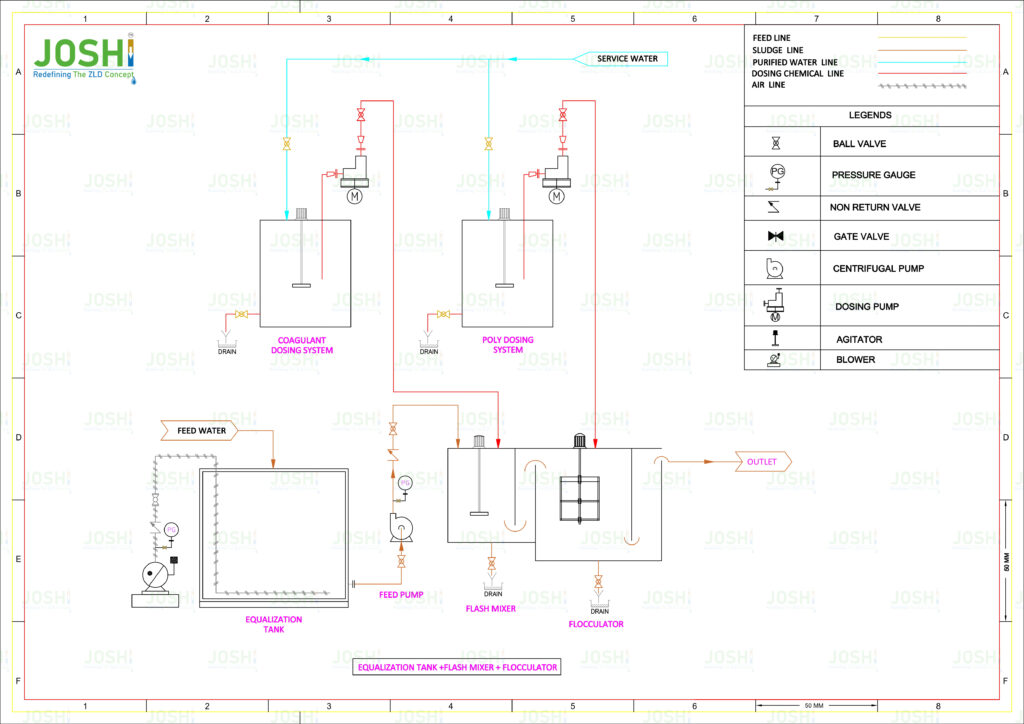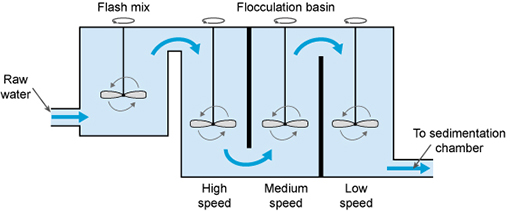Coagulation
Coagulation is an essential process in water treatment that involves the addition of chemicals to destabilize and aggregate suspended particles in water. It is a critical step in the removal of impurities and the clarification of water before it undergoes further treatment processes
Process Mechanism
During coagulation, a coagulant, typically a metal salt such as aluminum sulfate or ferric chloride, is added to the water. The coagulant carries a positive charge, which neutralizes the negative charges on suspend particles present in the water, such as dirt, organic matter, and microorganisms. The neutralization of charges allows the particles to come together and form larger, heavier particles call flocs.
Process Description
The coagulant forms hydroxide ions in water, which react with the particles and create a bridge-like structure between them. This process is known as sweep coagulation or charge neutralization. As the flocs continue to grow, they become more visible and settle more readily due to their increase size and weight.
The coagulation process is typically follow by flocculation, which involves gentle stirring or mixing of the water to promote the collision and aggregation of the destabilize particles.
Significance & Advantages
Removal of Suspended Solids: Coagulation helps to aggregate and settle suspend particles, including turbidity-causing substances, silt, clay, and other particulate matter, thus clarifying the water.
Removal of Microorganisms: Some microorganisms in water, such as bacteria and viruses, may be negatively charge. Coagulation neutralizes their charges, facilitating their removal through sedimentation or filtration.
Removal of Natural Organic Matter: Coagulation aids in the removal of dissolve organic compounds, such as humic and fulvic acids, which can cause color, taste, and odor issues in water.
Enhancement of Filtration: Coagulation improves the efficiency of subsequent filtration processes by reducing the load on the filters and preventing clogging.
Precursor for Disinfection: Coagulation can also enhance the effectiveness of disinfection processes like chlorination, as larger flocs are more easily removed and disinfected.
Targeted Impurities
- suspended solids
- colloidal particles
- turbidity
- algae
- certain dissolved organic compounds
- heavy metals
- pathogens
- microorganisms






